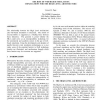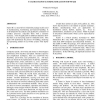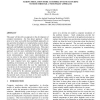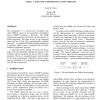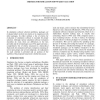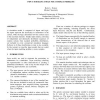WSC
1998
14 years 1 months ago
1998
The relationship between the High Level Architecture and web-based simulation is discussed. The notion of interoperability is suggested as a binding force between these initiative...
WSC
1998
14 years 1 months ago
1998
We consider a new simulation-based optimization method called the Nested Partitions (NP) method. This method generates a Markov chain and solving the optimization problem is equiv...
WSC
1998
14 years 1 months ago
1998
Taylor II is a menu-driven simulation package mainly used in manufacturing, warehousing, and material handling. It is developed for the analysis and quantitative evaluation of com...
WSC
1998
14 years 1 months ago
1998
This paper will describe an approach to the development of computer simulations - the 'four phase' approach - which aims to be more accessible than established approache...
WSC
1998
14 years 1 months ago
1998
A key concern for the area of discrete event simulation modelling is to encourage its adoption and use by nonspecialists. To achieve this it is important that we focus on developi...
WSC
1998
14 years 1 months ago
1998
The development of a discrete-event simulation tool, called GMSim, based on the generalized semi-Markov process (GSMP) formalism is described. The GSMP representation comprises bo...
WSC
1998
14 years 1 months ago
1998
In simulation software selection problems, packages are evaluated either on their own merits or in comparison with other packages. In either method, a list of criteria for evaluat...
WSC
1998
14 years 1 months ago
1998
A simulation model is composed of inputs and logic; the inputs represent the uncertainty or randomness in the system, while the logic determines how the system reacts to the uncer...
WSC
1998
14 years 1 months ago
1998
Simulation modeling provides an effective and powerful approach for capturing and analyzing complex manufacturing systems. More and more decisions are based on computer generated ...
WSC
1998
14 years 1 months ago
1998
The current structure of the High Level Architecture (HLA) puts a tremendous burden on network load and CPU utilization for large distributed simulations due to its limited contro...
